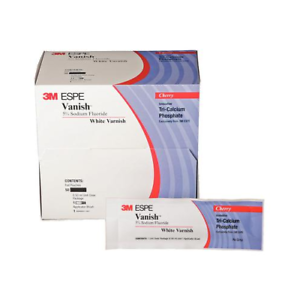Unfortunately, the well-applied fluoride varnish Fluor Protector is currently difficult to obtain, which is why other prophylactic products are increasingly being used. Basically, one chooses between one or the other means, because the decision for a product must be made on the basis of the patient’s dental health problem diagnosed by the dentist. Both products are very effective but are used for different dental and oral diseases. The use of fluoride varnish technology helps the teeth to stay healthy.
The mode of action of Cervitec Lacquer and Cervitec Gel

The Cervitec gel and the very effective Cervitec varnish both contain the active ingredient chlorhexidine digluconate (CHX) in different concentrations. They specifically counteract those bacteria that cause gingivitis and periodontal disease, but also eliminate the caries organisms Streptococcus mutant and Lactobacilli. Fluoride varnish strengthens the tooth hard substance and is recommended and used, especially for increased caries risk. All mentioned products help against hypersensitive tooth necks, and it cannot be eaten and drunk one hour after application.
The areas of application of Cervitec Lack and Cervitec Gel
Should a patient have a high SBI and have pocket depths, then a professional drug containing CHX is the right choice after professional teeth cleaning. It is advantageous that, if applied properly, the lacquer will have a depot effect of up to four months. Thus, if the patient were to undergo prophylaxis three times a year and then applied a chlorhexidine-containing varnish, optimal protection would be ensured.
The Cervitec gel has also proven itself. In addition to CHX (0.2 percent), it also contains 900 ppm of fluoride. Here, one has a double mode of action: on the one hand, gum inflammation is suppressed; on the other hand, the enamel surfaces are strengthened by fluoridation. This gel is well suited if a saliva test shows a very high streptococcus mutants value or a high lactobacillus value. It can also be used as a CHX cure at home. The additional application of a fluoride varnish should be discussed with the treating dentist on a case-by-case basis.
The applications of fluoride varnishes
There are several, often high-dose fluoride varnishes. The fluoro-protective varnish, on the other hand, is a pure fluorosilane varnish that is low-dosed at 900 ppm and can diffuse deeply into the enamel surface. Drying with the air blower increases the concentration of the fluoride value. This lacquer is excellent for protecting the tooth surfaces in a bracket supply or for applying to the fissures of the molars of caries-active children. If there are gingivitis and a hypertrophic change of the gums, one should rather resort to the CHX-containing products.
Fluoride is key to success in caries prevention
According to the experts, hardly any substance is as well studied as fluoride in toothpaste. Only a few years ago, the renowned Cochrane Collaboration evaluated 71 high-quality clinical studies in a meta-analysis. With clear results: Fluoride strengthens the enamel and leads in the long term to a reduction of caries and caries defects. Dental professionals see fluoride as the key to success in caries prevention because since it’s widely available in the form of toothpaste, tooth decay is worldwide.
